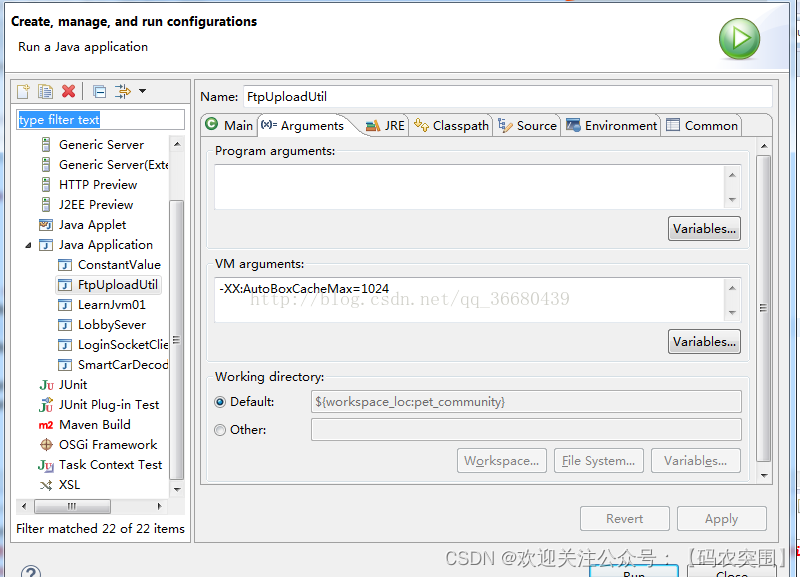相信大家在面试的过程中可能都遇到过这样一道题吧!
public static void main(String[] args) {
Integer a = 1000,b = 1000;
Integer c = 100,d = 100;
System.out.println(a == b);
System.out.println(c == d);
}
相信大家得出的答案都是 false true 但是在这里我一定要说,这个答案不是绝对的 cd 一定是true,但是ab 却不一定就是false ,也有可能是true。但是我得到的值是 true,true 如果不相信的同学或者抱有怀疑的同学请往下看!
我们首先要明白 通常情况下为什么答案会是 false,true。
Integer c = 1000 实际在内部做了Integer c = Integer.valueOf(100)的操作。我们来看一下Integer.class的源码。
/**
* Returns an {@code Integer} instance representing the specified
* {@code int} value. If a new {@code Integer} instance is not
* required, this method should generally be used in preference to
* the constructor {@link #Integer(int)}, as this method is likely
* to yield significantly better space and time performance by
* caching frequently requested values.
*
* This method will always cache values in the range -128 to 127,
* inclusive, and may cache other values outside of this range.
*
* @param i an {@code int} value.
* @return an {@code Integer} instance representing {@code i}.
* @since 1.5
*/
public static Integer valueOf(int i) {
if (i >= IntegerCache.low && i <= IntegerCache.high)
return IntegerCache.cache[i + (-IntegerCache.low)];
return new Integer(i);
}
从上面的代码中可以看到,当i >= IntegerCache.low && i <= IntegerCache.high的时候会从cache数组里直接取值,否则new一个新的Integer对象。
private static class IntegerCache {
static final int low = -128;
static final int high;
static final Integer cache[];
static {
// high value may be configured by property
int h = 127;
String integerCacheHighPropValue =
sun.misc.VM.getSavedProperty("java.lang.Integer.IntegerCache.high");
if (integerCacheHighPropValue != null) {
try {
int i = parseInt(integerCacheHighPropValue);
i = Math.max(i, 127);
// Maximum array size is Integer.MAX_VALUE
h = Math.min(i, Integer.MAX_VALUE - (-low) -1);
} catch( NumberFormatException nfe) {
// If the property cannot be parsed into an int, ignore it.
}
}
high = h;
cache = new Integer[(high - low) + 1];
int j = low;
for(int k = 0; k < cache.length; k++)
cache[k] = new Integer(j++);
// range [-128, 127] must be interned (JLS7 5.1.7)
assert IntegerCache.high >= 127;
}
private IntegerCache() {}
}
从上面的Integer.class源码中 可以看出,low的默认值是-128,high的值与integerCacheHighPropValue有关,
String integerCacheHighPropValue = sun.misc.VM.getSavedProperty("java.lang.Integer.IntegerCache.high");
当我们未对vm中的Integercache进行设置的时候其莫认真是127,cache数组也就是从-128到127,这也就不难理解为什么。
在开文时提到的经典面试题的结果会是false 和 true,之所以我后面强调不一定,就是因为当特egerCacheHighPropValue不为null的时候取决于jvm中的设置,
在eclipse中我们可以做这样的操作:
这时候再来执行那段代码,你就会得到结果是 true和true,下次谁再问你这样的问题,可以大声的告诉他不一定,实力装13一波!

 随时随地看视频
随时随地看视频



